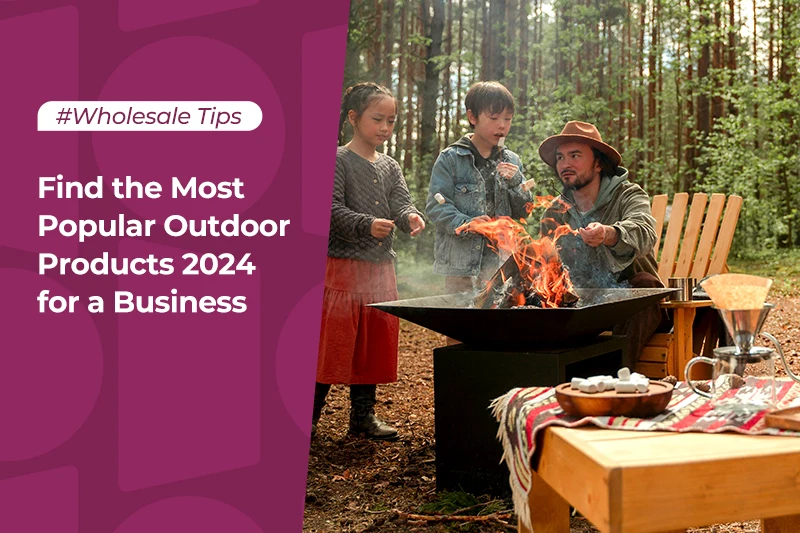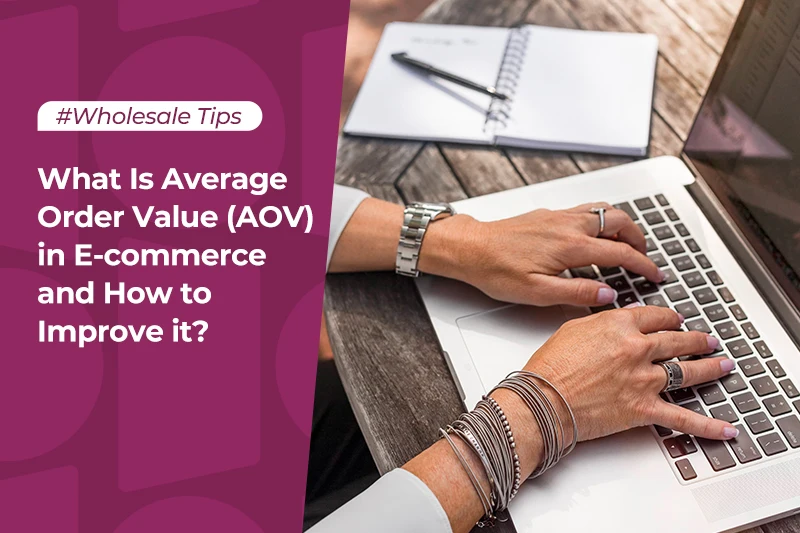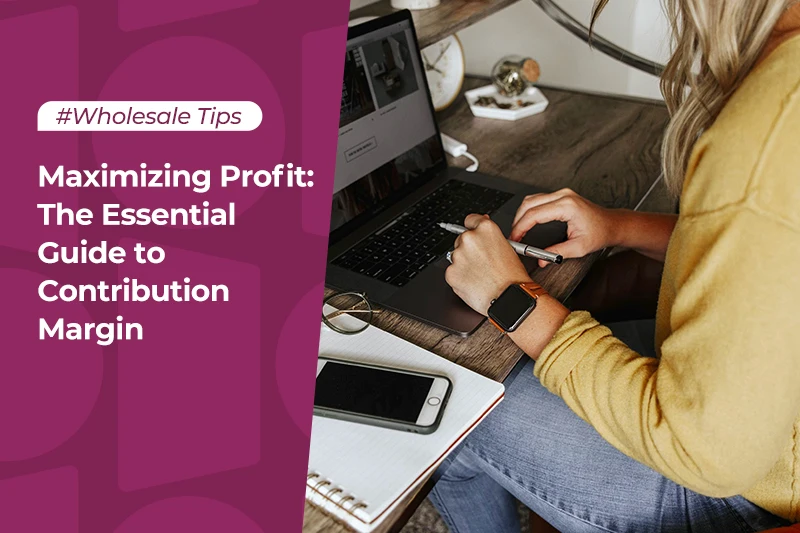How to start selling wholesale clothing online

Since the fashion and apparel industry is constantly growing and changing, there are many opportunities for wholesalers. This is especially true as eCommerce grows and more clothing retailers emerge.
In this post, we will briefly review what a wholesale clothing business is and how it compares to retail or private label businesses before we jump into an in-depth tutorial on how to start a wholesale clothing business.
Table of Contents
What is a wholesale clothing business?
A wholesale clothing business sells articles of clothing in bulk to retailers that will resell the items to consumers.
Since wholesale clothing suppliers sell in bulk, they offer their products at a much lower price point. This allows retailers to resell for a higher price and make a profit.
Some wholesalers manufacture the clothing in the house, and others act as a middleman between manufacturers and retailers.
Different clothing businesses: wholesale vs. retail vs. private label
Aside from wholesale, there are two other popular clothing business models: retail and private label. Before we dive into the tutorial for how to start a wholesale business, let’s take a look at these two additional models. The key difference to recognize is that retail and private label clothing businesses sell to different types of buyers.
What is a retail clothing business?
Retail clothing businesses sell directly to the consumers rather than to other businesses, which means that retail clothing businesses use a B2C model. Typically, retail clothing businesses source their products from clothing wholesalers.
Some popular retail clothing businesses include H&M, Zara, Gap and Ralph Lauren. These companies typically sell their own branded apparel, but they may sell lines from other brands, as well.
What is a private label clothing business?
Private label clothing businesses, on the other hand, skip the wholesaling phase and sell directly to consumers.
The benefit of this model is that the sellers have more control over pricing and all aspects of selling. Private label clothing businesses also generally create their products in small orders, which means that products are relatively unique and use more sustainable, “slow fashion” practices.
The downside for businesses using the private label model is that the average ticket is much lower than a wholesale order. This means that these businesses require many more sales to make the same amount of money.
Today, many private label clothing businesses are finding success with selling through online B2B marketplaces, such as Amazon, eBay and AliExpress. Occasionally, small stores will buy from private label clothing retailers to resell the items as part of a collection. These sort of partnerships help brands to gain some recognition and build brand awareness.
How to start a wholesale clothing business
Starting a wholesale business requires a bit of hard work and perseverance, but the process is pretty straightforward. Let’s take a look at the 10 steps you can follow to become a clothing wholesaler.
1. Study the Industry
Before you dive into wholesale clothing distribution, it is a good idea to understand the clothing industry. There are many opportunities in the clothing industry, but there are some potential challenges. Finding success in this industry requires alertness and agility to stay on top of rapid changes.
For example, the clothing industry depends on many social and pop culture trends. A specific clothing item or accessory may become a hot commodity overnight. This is greatly swayed by social media and influencer culture. If a photo or video goes viral, an article of clothing featured in that post may see a rapid increase in demand.
These quick trends can go just as quickly as they come. This creates a “high risk/high reward” situation. Knowing which trends to jump on and how much inventory to buy is something that is difficult to figure out since forecasting demands can be a challenge.
2. Choose a niche
There are so many types and styles of garments out there, and naturally, you cannot sell them all. Decide what type of garment your wholesale clothing business will sell.
Choosing a niche is not only about choosing what type of garments you will sell, but also choosing what sort of audience you’ll be serving. For example, if you’ve decided to sell t-shirts, identify what sort of retailers you’ll sell them to. Will you sell to a discount store or a luxury store? Will you sell to retailers catered towards men, women or children?
You could niche down even more and brand yourself to align with a very specific target audience. This could relate to the style of clothing or to how it is manufactured. For example, sustainable fashion is a popular trend right now. Finding this kind of edge can help you better connect with an audience.
Having a very clear idea of the type of product you’ll sell and who your ideal client is will help you with everything from creating a business plan to marketing and selling your garments.
3. Create a business plan
Wholesale clothing distribution comes with many moving parts, so it is best to start your business with a well drawn-out plan. You should outline what your business will be, what you hope to achieve and how you will achieve it.
Creating a plan for your wholesale clothing business will give you direction as you navigate through the startup process. Different organizations, including the SBA, have templates for business plans, but there is no need to put together something formal unless you are presenting it for funding.
That said, let’s take a look at a few things that you should address in your business plan.
Build an identity
As we mentioned, choosing a niche is very important if you want to build a successful wholesale clothing business. However, you must go beyond that and identify exactly what you have to offer.
Layout the specifics of your business, including what you’ll be selling and who you’ll be selling it to. Identify what problem your product solves. Build out an ideal client avatar (ICA). Identify how you’re going to reach this target audience.
Finances and budget
It takes money to make money. There will be several initial investments that you must make to get things started. Make a list of all of the expenses you need to get started and how much you will need on a monthly or quarterly basis to sustain operations. How much money will you need to make to break even? How many sales would that require?
Compare these expenses to how much money you have available. Will you have enough to self-fund, or will you need help? Are investors an option, or will you need to get a business loan?
Build a team
Building a reliable team is important for starting a business that will be sustainable for years to come. You will need some executives to head operations, sales, supplying, distribution, etc.
You will also need laborers to run the operation. Hire workers for jobs like order fulfillment, inventory management and customer service.
Figure out what roles you need to fill and create descriptions to hire accordingly.
Document internal processes
Consistent processes that are optimized to best serve your business and your customers are key. Document the processes that make your business possible, such as daily tasks, employee on-boarding, lead generation, marketing strategies, order fulfillment, etc.
The goal with this is to create tangible instructions for anybody to step in and run your business in the event that you cannot be there or you hire a CEO and hand over operating responsibilities.
Having your processes documented will also help you maintain consistency in your operations and help you see where you can tweak to make improvements if necessary.
4. Secure licenses and permits
Starting and operating a business requires different legal action and formalities in different places. Generally, your business must be registered as an entity, whether that be a corporation or an LLC. This helps to protect yourself as an individual since it keeps both the finances and legal implications as a separate entity.
We encourage you to look into local guidelines and restrictions to see what you need to do. The purpose of this is to keep your business protected and make things easier at tax time. Seek help from a local tax professional and business lawyer.
As you navigate through this part of the process, inquire about taxes on your orders. Figure out what sort of sales tax you need to charge and what sort of fees there will be if you do business across borders.
While we’re on the topic of exporting, we encourage you to invest in some consultations with a local exporting specialist so that you can create the proper infrastructure if that is something you’re interested in. That way, you’ll be fully aware of all of the legal implications of international transactions.
5. Set up your physical location
You will need a physical location for your business. Depending on whether you are manufacturing your clothing or not, you’ll need either a factory or a wimple warehouse to store inventory and fulfill orders
Clothing manufacturing is a process of its own, but it is important to mention it here as it will play a role in your wholesale clothing business. As a clothing wholesaler, you have the option to manufacture clothing in your own factory or buy from another manufacturer. Opening a factory of your own requires a bit of capital to get started, but it could help you make more money down the road.
Either way, you will need to consider whether you will rent or buy. Renting gives you the flexibility to start small and move into something bigger as your business grows. However, you’re not building any equity by paying rent. Buying, on the other hand, has less flexibility and requires a larger down payment, but as you pay your mortgage, you build equity.
6. Determine your prices
Setting prices is an important part of becoming a clothing wholesale distributor. You can’t set your prices too high or too low. You have to find a competitive middle ground.
First, identify how much each unit costs you whether you’re manufacturing it yourself or if you’re sourcing it from a third-party manufacturer. This is the absolute lowest you can go without losing money. Next, take a look at your competitors’ prices and the demand for the product. How much are the selling equivalent units for? How much are retailers willing and able to spend?
With that in mind, it’s time to take a look at different pricing strategies. The 5 main types of pricing are absorption pricing, bundle pricing, market-based pricing, value-based pricing and differentiated pricing. For more information on each of these strategies, please take a look at our guide to wholesale price calculation.
After you’ve chosen a strategy, you can apply the basic formula for wholesale price calculation:
average cost of goods manufactured + profit margin = wholesale price
This will give you a price per unit and you can create packages accordingly. Remember, in wholesaling, prices can be negotiated. Add some extra padding in the pricing if you want some room to come down on prices without compromising your profit margin.
7. Create an online storefront
To sell your products online, you’ve got to create an online storefront. There are a couple of ways to go about this. You can create a storefront on a B2B eCommerce marketplace or you can build an independent site of your own.
It is a good idea to do both. Why? A storefront on an eCommerce website will drive more traffic to your product listings. This is because the most popular eCommerce marketplaces double as a search engine, so the platforms show your products to buyers that are looking for them. On the other hand, the benefit of using your own site is that you have total control over the branding and user experience.
Please check out our guide to where to sell online for more information on how to choose the best way to create an online storefront of your own.

8. Curate your product listings
No matter where you’re posting your products, you’ve got to curate your listings to speak to your ideal buyer. Using high-quality photos that capture your product from different angles is a good place to start. Videos of the garments are also valuable, as they give potential buyers a better idea of the quality of the material.
When it comes to optimizing product listings on an eCommerce marketplace, you have to keep the search engine aspect in mind. Choose keywords that your audience is searching for, and use them in your product titles and descriptions.
For example, if you sell women’s shirts, be specific on what you sell. If they are blouses, clearly state that. Use descriptive words about the fabric, colors, fit and more.
Presenting your products in a way that poses them as a solution to a problem is also a great approach. For example, women’s leggings have a tendency to be transparent when they are made cheaply, which means that see-through leggings are a problem. If your legs are better quality and provide full coverage, let that be known.
Get creative with your listing, but always keep the buyer at the forefront.
9. Start selling
Once you’ve got your storefront and product listings setup, it is time to start selling. Depending on how you’ve structured your storefront, you’ll either have to close deals through conversations directly with clients or fulfill orders from submitted forms.
It is important to allot resources to sales. If you are running a small wholesale clothing distribution business, invest some time in sharpening up your sales skills. Learn how to build genuine relationships and optimize your sales pipeline. If you have the resources, invest in a highly-skilled individual or team that will take on all of the selling responsibilities.
Without a proper salesforce, it will be difficult to make enough sales to sustain your business.
10. After the Sale
Staying in touch with buyers after the sale is very important for setting a solid foundation and eventually growing your wholesale clothing business.
Make a call to follow up with buyers after they’ve received the order to make sure that everything was delivered as expected. Invite them to provide feedback to help you perfect your process. This could be done with a survey over the phone or in another follow-up email.
When buyers express that they are happy with your service, ask them to leave you a review on Google, Facebook and your chosen B2B eCommerce marketplace. Collect testimonials in writing or video form. These will help build your credibility and attract new customers.
Stay in contact with your buyers so that you can make sure that they order from you again when their stock is running low or they’d like to add a new item of clothing to their lines.
Again, genuine connections are key, so make it a priority to maintain relationships with your customers.
How to use Alibaba.com to wholesale clothing online
As we mentioned, using a B2B eCommerce marketplace can be a great help in exposing your brand to new buyers and entering new markets.
Using Alibaba.com to sell clothing to retailers is pretty simple. Our platform has several tools that are designed to help you grow your business. You can reach customers through our platform’s built-in search engine, or you can answer Requests for Quotation in the dedicated feed.
With Alibaba.com, you can manage your customer relationships directly through our site or from our mobile app. We also have automatic translation and currency conversion tools, which makes it possible to make sales across borders.
Becoming a wholesale clothing distributor takes a bit of time and effort, but it is certainly possible with the right preparation and execution. With the help of an eCommerce platform like Alibaba.com, you can kickstart and grow your business.
Create an account today and start reaching buyers on Alibaba.com!
Start your borderless business here
Tell us about your business and stay connected.
Keep up with the latest from Alibaba.com?
Subscribe to us, get free e-commerce tips, inspiration, and resources delivered directly to your inbox.















